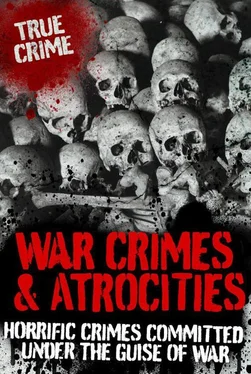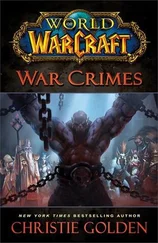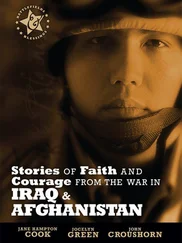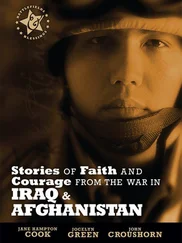Dyer and his men simply marched away down the same route they had arrived, leaving behind the carnage of dead, dying and wounded. Although there is no official record of the number of Indians killed on that day, it is estimated that 400 died and as many as 1,200 were severely wounded, although it is suspected that the numbers were far higher.
AFTER THE EVENT
Jallianwala Bagh was only the start of a prolonged phase of appalling violence and insurgence. When news of the massacre reached the surrounding districts, mass riots erupted in the Punjab, and the government placed a further five towns under martial law. Students and migrant labourers from Kashmir set fire to government buildings, destroyed the Kachi bridge, bungalows, local courts and also the railway station. Spontaneous riots broke out in Sheikhpura, Sangla and Chuharkhana. The local authorities appealed to the government for help, but as the bridges had been destroyed they had to deploy aeroplanes to quell the insurrections. On 14 and 15 April, aircraft from Lahore dropped three bombs on a the protesting crowds, followed by rounds of machine-gun fire.
Appalled by the escalating amount of violence and subsequent deaths, Gandhi called for satyagraha , which is the philosophy of nonviolent resistance. From then on colonial reprisals began, perhaps the most notable of which was the famous ‘crawling order’ introduced by General Dyer. This order meant that anyone passing down the street where Miss Sherwood was assaulted, had to pass on all fours with their noses close to the ground, just like an animal. Under marshal law there was even a mandate that said Indians must dismount in the presence of a European and raise their right hand as a sign of respect. Others who were suspected of being involved in any sort of trouble were beaten and made to work as punkha-pullers (or fan operators). A total of 1,229 people were convicted of involvement in the uprisings – 18 were sentenced to death, 23 were transported for life and 58 were flogged on the orders of the Martial Law Commission.
General Dyer was convinced that he had managed to crush the rebellion, but eventually a Disorder Inquiry Committee, known as the Hunter Committee, was set up to investigate what had taken place, and it was decided that he had committed a ‘grave error’. Dyer was relieved of his commission and forced to take early retirement from the army. However, on arrival in England he was treated as a hero and presented with a purse containing thousands of pounds and a jewelled sword inscribed with the words ‘Saviour of the Punjab’.
Back in India, the Amritsar Massacre had provoked feelings of deep hatred and it led to the freedom movement in the Punjab against British rule. It also paved the way for Mahatma Gandhi’s Non-Cooperation Movement against the British in 1920.
The actual site of the massacre at Jallianvala Bagh became a place of national pilgrimage. A memorial was built on the site and was unveiled at a ceremony by the then-president of India, Dr Rajendra Prasad on 13 April 1961. To this day, the bullet holes can be seen in the walls and adjoining buildings. The well, into which several people jumped and drowned, has also been turned into a protected monument inside the garden. A semicircular verandah surrounding a children’s swimming pool marks the spot where General Dyer’s soldiers stood waiting to fire.
One man got his own revenge for the massacre, which he had witnessed first hand. An Indian revolutionary nationalist by the name of Udham Singh, shot dead Sir Michael O’Dwyer, the man believed to have planned the actual massacre, at Caxton Hall in London on 23 March, 1940. He would probably have liked to have killed General Dyer as well, but he had died many years earlier in 1927. Singh was a freedom fighter and The Times referrred to his action as ‘an expression of the pent-up fury of the downtrodden Indian people’.
PART FOUR: WAR AND ATROCITIES OF WORLD WAR II
1940–45

During World War II, Belgium was invaded by the Germans. There was heavy fighting as the Belgium army fought to defend the country, and each side lost many men. Finally, on 27 May, 1940, the Belgians surrendered. King Leopold III of Belgium was made a prisoner of war but his ministers were able to flee to London, where they set up a government in exile, under the protection of the Allied forces.
The ensuing occupation of Belgium soon proved to be beyond everyone’s worst nightmares as the Germans rounded up the population for extermination or forced labour in the notorious concentration camps. Over the next few years, more than 25,000 Belgian Jews met their deaths in Auschwitz-Birkenau, either through being gassed or through malnutrition, disease and neglect. In many cases, Belgian people collaborated with the Germans in sending their compatriots to their deaths; however, there were also hundreds of brave Belgian citizens who risked their lives to help the victims of Nazi persecution, including two underground resistance groups called The White Brigade and The Secret Army.
In 1944, with the help of the Allies, the resistance proved victorious, and the Germans were defeated. However, the war crimes and atrocities that had occurred during the occupation were never forgotten, and they left an indelible scar on the nation’s history. Thousands of innocent victims had lost their lives, and today they are remembered in the many war memorials across the country, whether in great cities, bustling towns, or tiny villages.
THE MASSACRE AT BANDE
By 1944, the Germans were near to defeat, and their troops’ ferocity intensified as they realized that Hitler’s plan was failing and Germany could now lose the war. Accordingly, the Nazis launched the Ardennes Offensive, colloquially known to the Allies as ‘the Battle of the Bulge’, referring to the dent that the Germans initially made in their lines as they advanced. The Ardennes Offensive, which aimed to split the British and American lines and encircle the Allies’ armies, was planned in total secrecy and caught the Allies by surprise. However, the Allies eventually fought back and the Offensive was repelled, but not without great losses to each side.
During the Offensive, a unit of German soldiers arrived in the small village of Bande in the south of the country. It was Christmas Eve, and snowing heavily. They captured the village, and then set about tracking down local resistance fighters who had attacked and killed three German soldiers there several months before. Their method of doing so was to arrest all the men in the village and then question them about the events of 5 September, when the attack had occurred. Then, one by one, each of the men was shot in cold blood.
The way the Germans executed the men was to lead them to an open door and push them in. Inside the door, a gunman was hidden, and as each man entered, the gunman shot him in the neck at point-blank range. As the victim fell, the gunman kicked his body into the cellar of the building. In this way, 34 men were murdered, one after the other. Only one man, 21-one-year-old Leon Praile, escaped. In a hail of bullets, he ran to the forests surrounding the village and hid there, managing to avoid capture.
On 10 January, 1945, British troops arrived in Bande. The war was now over and the Nazis had, thankfully, been defeated. However, the memory of what had happened on Christmas Eve the year before still haunted the villagers, and many of them gave harrowing accounts of what had happened. Accordingly, a war crimes court was set up in Belgium, the massacre was investigated, and one of the culprits brought to justice.
Читать дальше













